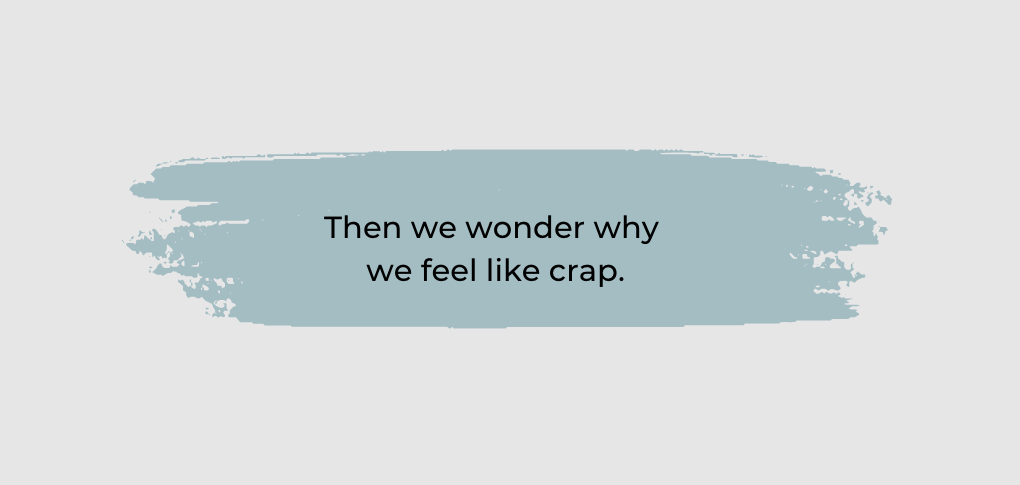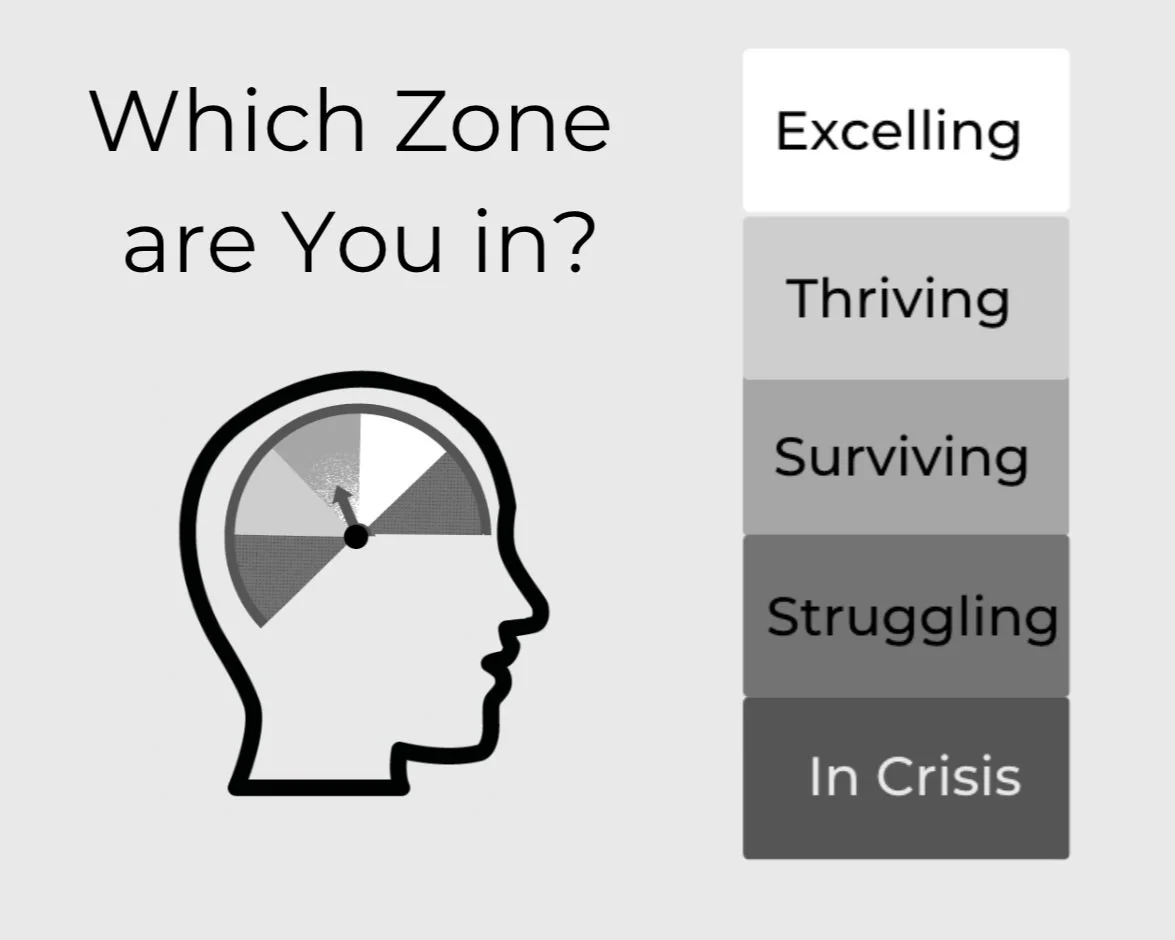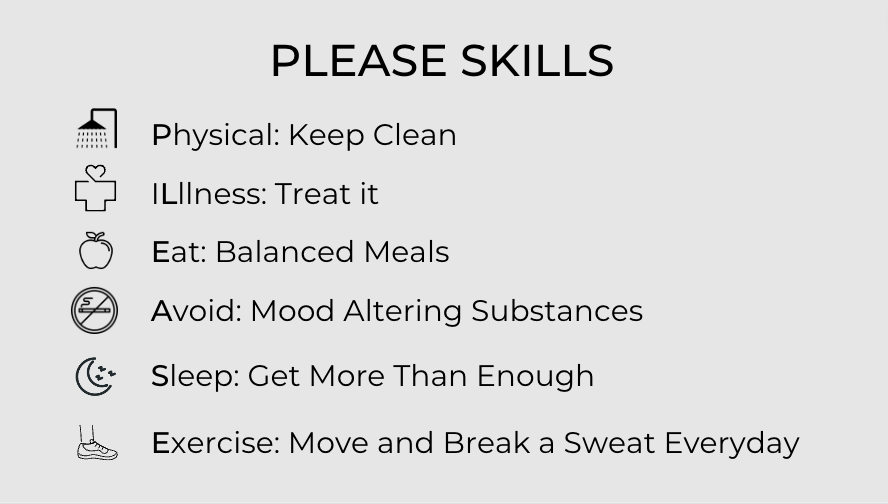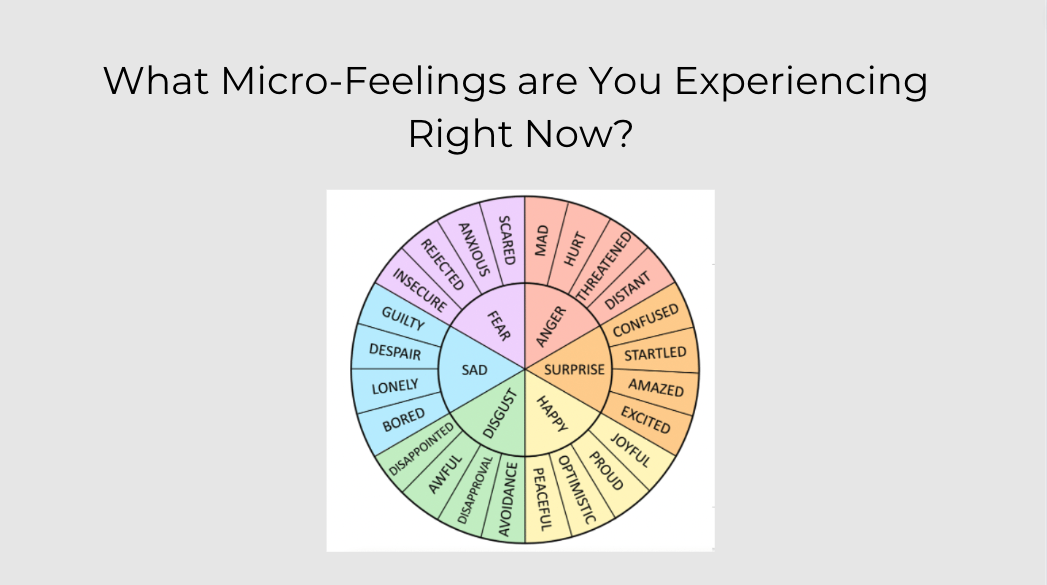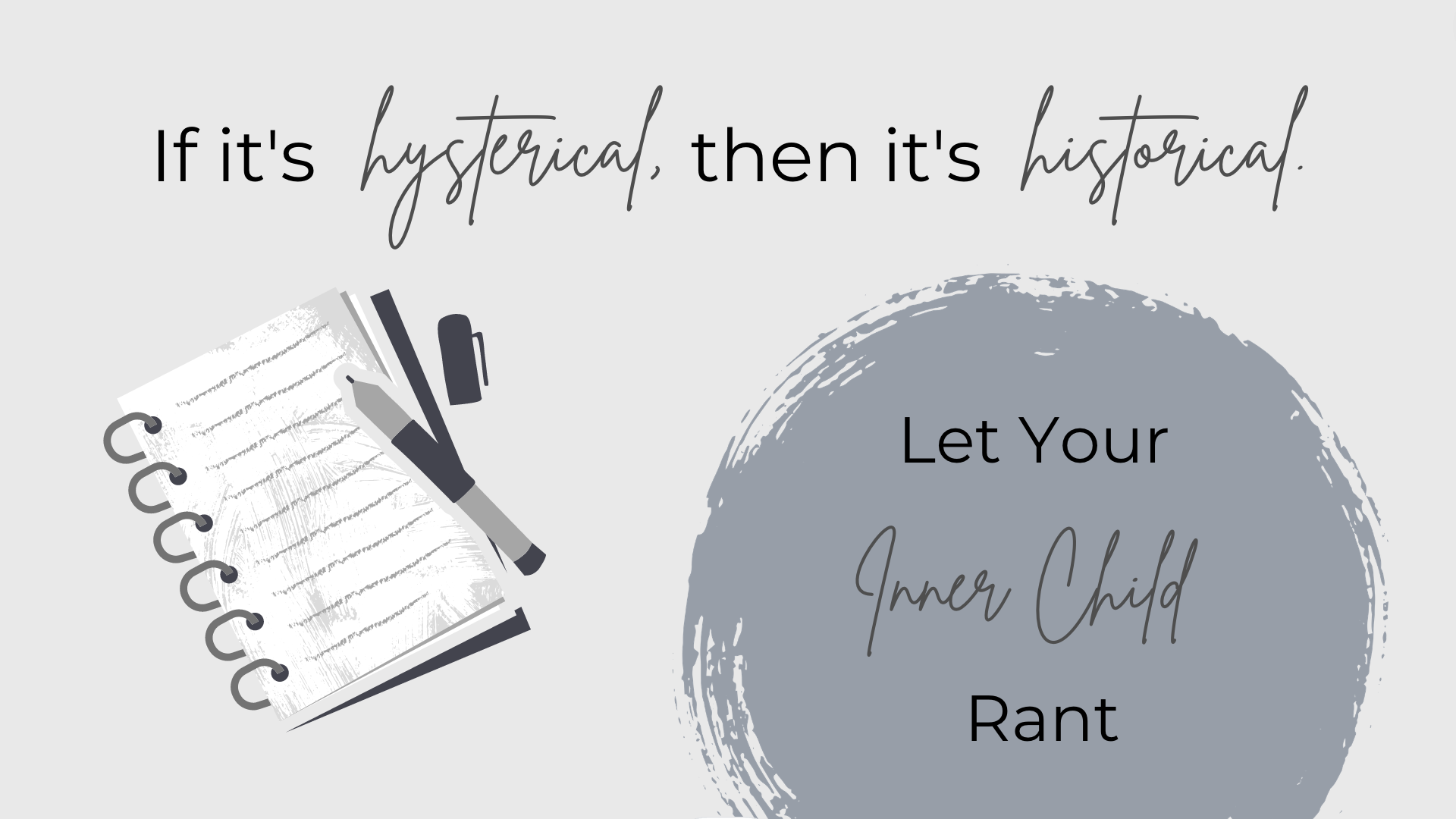MORE JOY FOR MOMS TOOLKIT
Introduction: My Story
Validation: A Letter from Love
Article: The Science Behind Why Moms are so Anxious
Skills: Daily 5-Minute Practices
Expressive Endings: Some Unfinished Thoughts on Mothering by Jenna Moon
Hey Mom,
This toolkit is designed in five-minute sections with opportunities to read, watch, or listen—so you can digest the information while tending to your family. REMINDERS are provided for taking breaks and tracking your accomplishments, so when you come back you’ll know exactly where you left off.
Note: I acknowledge that my use of the pronoun “she” when referring to mothers leaves out those moms who use the pronoun “them.” It’s for simplicity, not to exclude anyone. I welcome all moms!
WARNING: You might feel worse before you feel better. That’s part of the process and it will pass. Even if you feel crappy, keep coming back. Consistency is key in reaching your goal of releasing anxiety and resentment to experience more joy as a mom.
You’re already whole. There’s nothing to fix.
Introduction: My Story
Looking back, I don’t know what I had. I felt alone when I was supposed to be happy. And at times I was. But usually, I was thrashing around inside waves of intense feelings, day after day, trying to stay on the surface until I quickly began to drown.
It’s hard for mothers to face their own depression, the anxiety, the despair, the rage, the confusion, the crushing vulnerability of loving someone so helpless, so small, so pure. We’re supposed to be relieved and grateful for this beautiful baby. And we are. But we don’t feel right. And we aren’t supposed to feel what we feel. And even if we admit to our feelings, it’s hard to get effective help.
I have since learned how common postpartum depression and anxiety is. Women sat me down with wide desperate eyes, lowered their voices and leaned in. They told me about their mad mommy moments. The time they had to put the baby in a safe place and go call their mother to come stay for a few weeks, to make sure nothing bad happened. Or the time they called their partner at work and sobbed, “I can’t do this anymore.” And meant it. Or the times they couldn’t stop obsessively thinking about the knives in the kitchen, the pills in the medicine cabinet, or the ropes hanging from the backyard swing set. They prodded me to please finish writing my story. The world is hungry for true stories, especially stories about depression. Every story about getting to the other side with everyone making it out alive and well helps—though there were days I doubted this was possible, seriously doubted I’d survive, or more accurately doubted whether I wanted to survive.
My feelings of constant despair and rage were unbearable. Writing was my way through it.
Nothing was ever wrong with me.
In finding a way to express the unspeakable, I saved myself.
Feel free to read Chapter One of my memoir Thoughts No Mother Should Have (And Definitely Never Say Out Loud).
I will never forget standing in the bathroom holding my newborn to my chest wondering what the hell was wrong with me.
Postpartum anxiety and depression sideswiped me like a toddler with a toy basket. Everything I thought I knew about myself got dumped upside down. Which was very confusing because the only thing I ever wanted was to be a mom. I taught pre/postnatal yoga. I worked as a birth doula. I taught at an outdoor preschool. I thought I was well-prepared.
I was. But not for the deluge of postpartum anxiety, intrusive thoughts, exhaustion-that-led-to-rage, and finally depression that took me down for months. The amount of feeling was just too much.
I was equipped with very few skills to express what was going on. I had a support system that tired to help, but I still fell into the hole of PPD. It happened again a few years later after I had my second child, but this time he was a toddler and it was post-weaning depression. I had no idea that was even a thing.
By the time I had my third baby, I knew what to expect. I had built up a support system that worked and I want to share that with you here.
I created this is for you.
So you don’t suffer the way I did.
Love,
Jennifer
Validation: A Letter from Love
These first five minutes are for you to let in the love. You need a break. You need to be loved up just for being you. Take this time away from the mom-guilting, anxiety-inducing, shaming self-talk that ruins your day. Release it all with an exhale and know that you are completely supported. Breathe rhythmically and evenly into your heart as you watch the following video. Notice what you feel and where you feel it in your body. Remember luv, that you are precious and deserve to be validated. Adults and especially moms need to self-soothe. Be intentional about nourishing yourself. Inhale deeply as you press play and let the words sink in.
Introduction: A Letter from Love
—written by Jennifer Dorothy
This is a letter to you from Love.
Will you sit with me for a while and let me tell you all the ways I love you?
I love how hard you work to support your kids.
I love how much effort you put into your life.
I see how much energy you must generate every day to create the life you want.
I love how many hard things you do in a day, things that you don’t want to do, things that just suck, things that are repetitive and mind-numbing, and infuriating, and physically exhausting.
I love all of this about you because within it all you find the magic.
You find what’s special and beautiful and you bring that into your kids’ lives.
You bring that to them, the beauty, the magic, and the wonder.
I love you with all my heart and I want you to know this always.
Let me wrap this love around you to provide comfort to you all day today.
I’m always here for you.
I Love You
—a daily exercise inspired by Elizabeth Gilbert
Moms Need to be Affirmed and Soothed
I celebrate you.
Choosing to move toward more joy and away from anxiety and resentment is a big effin’ deal, so whisper something sweet to yourself right now for taking this step:
“You’re awesome. Nice work insert your name.”
“You got this. You will feel better.”
Notice your resistance or how unfamiliar it feels.
Notice if it’s easy.
Here’s WHY that might be challenging:
As mothers, we’re constantly soothing our little ones. Children need other people to soothe them. We needed other people to soothe us when we were little. We needed adults to help us learn how to regulate our emotions, and help us learn how to soothe ourselves.
We might not have gotten that soothing and now we need to re-parent ourselves while parenting our babes.
Unfortunately, as adults, we can do whatever we want. And we’ve been doing certain things to soothe our pain for many years. We think it feels good, but we’re likely just numbing the pain. We’re all guilty of the most common form of adult self-soothing: addictive scrolling and disengaging from family members. It’s just too easy to relax looking at a device that is on our body or in arms reach 24/7. A few more ways that adults self-soothe are as follows:
Food
Gaming
Drinking
Gossiping
Substance misuse
Sex without intimacy
Constant explosive anger
Overthinking and ruminating
Compulsive online shopping
SO! The exciting thing is that naming the behavior we want to change is 80% of the battle. You’ve got your phone in your hand and you’re not scrolling if you’re reading this ;) You’re using your phone as the learning, creative, communication, or informational tool that it is. Now that you’re aware of it, you’ll start to discern between using it as a tool or using it for entertainment or distraction.
When you fill your mind with positivity and use your phone for transformation instead of distraction, it becomes a power tool. I often announce out loud to my kids what I’m doing with my phone and put it down when I’m done, so they know I’m not going to start mindlessly scrolling (and if I do fall down a rabbit hole of reels, I can climb out.)
When our kids see us practicing self-regulation skills, they learn through example, which creates lifelong benefits throughout our entire family and society as a whole.
Watch, listen to, or read the statements in the Letter from Love as a way to calm your nervous system and self-regulate. Celebrate yourself by making your favorite hot drink, listening to your favorite song, or lingering for a few more minutes in the shower. Intentionally congratulate yourself for changing your behavior and revel in the dopamine hit that creates positive results. The same chemical neurotransmitter that makes you come back to your phone works for other self-soothing techniques.
The more you educate yourself on brain science, the easier it is to care for yourself and your family. Let this be the first step to reaching your goal of releasing anxiety and depression to experience more joy as a mom.
REMINDER -That’s plenty for now. Tend to your life with babe(s) then come back. Consistency is key when it comes to reaching your goal of releasing anxiety and resentment to experience more joy as a mom. You’re doing great! Copy ’n paste the following into a text or email to yourself so you can track your accomplishments and know exactly where you left off:
More Joy for Moms Toolkit: Introduction done! Next up, an article—The Science Behind Why Moms are so Anxious: If it Feels Like You’re in Survival Mode, You Are. http://www.jenniferdorothy.com/love
The Science Behind
Why Moms are so Anxious
If it Feels Like You’re in Survival Mode, You Are
6 min. read
During a woman’s pregnancy and postpartum period, major changes take place in her brain structure that help her adapt to motherhood. The common term for it is “Baby Brain.” Some women notice a decrease in memory and mental processes like planning, the ability to pay close attention to detail, remembering instructions, and juggling multiple tasks successfully. Does that sound like you? It was definitely me.
This type of executive functioning occurs in the front part of the brain called the frontal lobe, the cerebral cortex, or the prefrontal cortex. When you rest your forehead in your hands, you’re literally holding your prefrontal cortex in the palm of your hand. This is where language, social behavior, and emotion regulation originate. Unfortunately for new moms, these are the executive functions that are put on the back burner during pregnancy and the first few months postpartum. Why? Because your brain is focused on one thing and one thing only: survival—for you and your baby.
If it feels like you’re in survival mode, you are.
It makes perfect sense that new moms are wondering why they’re struggling with the so-called “regular” tasks of life. They’ve lost aspects of their executive functioning, but not forever! It all comes back, after a period of putting most of their cognitive energy into keeping themselves and their little vulnerable bundles of sweetness alive. For some women, it probably feels bizarre, awful, or even disorienting to experience the reorganization of their brains.
These faculties are temporarily decreased:
Reasoning - Problem-solving - Comprehension
Impulse control - Creativity - Perseverance
It can be very unsettling. And it’s actually the perfect set-up for postpartum depression (PPD) and postpartum anxiety (PPA).
Our survival instincts come from a deeper, more primitive part of our brain also known as our reptilian brain or the amygdala. By telling our nervous system when to run, fight, or stay very still, it ensures we avoid danger. And because it’s designed to keep us alive, the amygdala will always override the prefrontal cortex. When face to face with a saber-toothed tiger, adrenaline is instantly forced into our muscles, our heart rate increases and our frontal lobe goes into lock-down. There’s no time to be reasoning with it or wondering if it’s good or bad.
When I had postpartum depression and anxiety it felt like fear and rage controlled me. It was as if they came out of nowhere. Every little thing had me ready to fight or flee. Speeding cars freaked me out when I was walking with her in the stroller. Driving with her in her car seat was all of a sudden scary. I was worried, nervous, and on edge all the time. And come to find out, I was right. It’s supposed to be this way. I was a new mom with an overactive amygdala doing the only thing the most primordial part of my brain was directing me to do—keep me and my baby alive. My mind thought bears and poisonous snakes lurked behind every corner. Being constantly in survival mode was draining.
It wasn’t always like this. In some parts of the world and historically, new moms were pampered for months on end by their mothers, aunties, sisters, and friends. The saying goes like this, “Three weeks in the bed, three weeks on the bed, and three weeks around the bed.” That’s over two months of in-the-bedroom care! Imagine being surrounded by a base of security, solace, and safety. Imagine being cared for emotionally, being nourished, and fully supported. A new mother’s only job is to focus on taking care of her baby, while others take care of her.
Not so much now. Maybe we get two weeks (if that) of slapped-together help. We’re expected to get back into the swing of things pretty much immediately and we beat ourselves up when we can’t. Then we wonder why we feel like crap. We fall deeper into the world of anxiety and depression without understanding what we actually need.
Moms must prioritize their brain health without feeling guilty.
But what if they don’t even know where to start? I remember being irritable and picking fights with my partner. I remember checking out and mindlessly scrolling on my phone for hours. I remember feeling exhausted, but also bored and needing adult conversation and engagement. What I know now is that I was subconsciously spending most of my day concerned about threats—real and not real. By evening, I was burnt out or creating conflict. I couldn’t take my frustrations out on the baby, so it was my partner who got the brunt of it.
I was caught in a never-ending loop of feeling guilty for how I was behaving and not knowing how to stop. Depression and anxiety would trade places in my life, sometimes hour by hour. I followed the recommendations. I went to yoga classes. I spent more time with my girlfriends. I considered having one glass of wine at night to take the edge off. I felt some relief when I would shop online. But regardless of what I did, I couldn’t shake the doom-and-gloom or frantic feelings.
How do you prioritize your brain health when you don’t even know what you need?
First of all, look at your life honestly. Most of us are so accustomed to living with a hyperactive amygdala running the show, that we tolerate increased levels of anxiety all day long. We think it’s normal. It’s all we’ve ever known. Distraction, avoidance, busyness, and task-oriented-not-ever-getting-enough-done were what was modeled for many of us by our mothers or caretakers. Which also makes perfect sense. Life is full of trauma, destruction, and loss. Many of us have experienced our fair share of it and our ancestors carried even more.
The good news is you can instantly turn off the responses from your amygdala if you can identify when they’re happening. If you look at your life from a distance and see what the heck is actually going on, then you can make changes. Here’s where mentors, life coaches, and therapists come in. If you’re struggling to understand what needs to change, they will ask the right questions to help you improve your life.
This is what we know from cognitive science: it’s proven that calming your nervous system also soothes the signals coming from your amygdala and supports more executive functioning in your brain. The things we think we don’t have time for—or that we squeeze into the in-between gaps—like listening to music, practicing mindfulness, spending time in nature, and sharing physical intimacy with our partners and/or children, all do the trick.
I know you’re doing your best, but if you truly want these things:
To decrease your willingness to engage in conflict
To decrease your tendency to disengage by scrolling on your phone
To increase your ability to use loving language
To increase your positive self-talk
Then the following Daily 5-Minute practices can help. It’s all about learning to self-soothe and nurture yourself in healthy ways. Listening to or watching the Letter to You from Love is one way to hush survival mode and switch gears into thriving mode. Here are more ways to gain micro-moments of calm that will help you reach your goal of releasing anxiety and depression to experience more joy as a mom.
REMINDER -That’s plenty for now. Tend to your life with babe(s) then come back. Consistency is key when it comes to reaching your goal of releasing anxiety and resentment to experience more joy as a mom. You’re doing great! Copy ’n paste the following into a text or email to yourself so you can track your accomplishments and know exactly where you left off:
5-Minute Mental Health Method for Moms Module 1: Article done! Next up, Building Skills: Daily 5-Minute Practices 1. PLEASE skills. 2. How to get enough sleep. 3. How to address your anxiety with your breath. 4. Why we need to deny the drama. 5. Be a little bit bossy with yourself (in a good way.) http://www.jenniferdorothy.com/love password: morejoy
Building Skills: Module 1
Daily 5-Minute Practices
We’re all special snowflakes who require a certain cocktail of information, exercises, and “Ah-ha!” moments that lead to our healing. I know I’ll always be triggered and so will you Luv, but it doesn’t always have to result in anxiety and depression. Choose one of these practices, then schedule 5 minutes a day to try it. Set a reminder on your phone to check in with yourself or screenshot your favorite slide below and use it as your home screen for a week. Find out what works best for you to instigate real change.
Be a Little Bit Bossy (in a good way) - Here’s the deal. At some point, those of us who suffer from anxiety and depression learned to deny our needs. We learned that it was easier to stay quiet and acquiesce to survive. Over time, we forgot we even had needs.
Now that we’ve got a little one to care for who is very clear about their needs, we can honor the force they use to get them met. They cry and scream. They stomp and shout. When you’re exhausted, remember that the only way to sustain caring for such a fierce little force of nature is to force yourself to follow through with your PLEASE skills, in a non-self-shaming way. Be compassionate with yourself but borrow some gusto from your baby and demand that you care for you. Set clear boundaries on exactly how you’ll get your needs met. Make a plan. Tell your partner, friends and family what you want and need.
This might be the first time in your life that you’ve ever had to really take charge of caring for the little child inside you that wants their basic needs met. Our mothers, aunties, and grandmothers may not be around to care for us, but we can set up a system that’s just as effective and a little bit bossy. Join the private More Joy as a Mom Facebook page to meet moms who honestly know your struggle and can provide support.
Practice PLEASE Skills
Get More Sleep
Identify Micro-Feelings
Let Your Inner Child Rant
Non-Linear Movement
Practice PLEASE Skills - Caring for our basic needs seems obvious, but we’ve all heard the new moms’ cry, “I don’t even have time to take a shower!” Moms are devoted. They drop self-care like a hot potato when it comes to caring for their babies. This is the key factor that made me think twice about skimping on meals or putting off exercise: when our basic needs go unmet, we’re more vulnerable to emotional disruptions. PLEASE is an acronym from Dialectic Behavioral Therapy (DBT.) Which one of the following areas is the first to go when you’re stressed? Promise your beautiful body that has provided you with your beautiful children, that allows you to experience this beautiful life, that you’ll give her some extra love this week. She deserves it.
Physical: Shower. Change your clothes. Brush your hair and teeth.
ILlness: Make the doctor’s appointment you’ve been meaning to make.
Eat: Try to eat a rainbow of colorful foods every day.
Avoid: Mood-altering substances. Ask yourself what you need to quit to be more authentically engaged in your relationships.
Sleep: Send a text that says, “I’m exhausted. Can you care for baby while I take a power nap?”
Exercise: Do what you love and schedule it.
2. Get More Sleep - I know you’re trying to power through it, but you don’t have to suffer. Lack of sleep is affecting your mental health. It limits your hormone production, which decreases the levels of important neurotransmitters in your brain like serotonin and dopamine. As each day passes without a decent night’s sleep, your ability to emotionally regulate gets harder and harder.
Do whatever it takes to get more sleep.
You’ve tolerated running on fumes for so long that it seems normal by now. When you need everyone to think you’ve got this—and you know you don’t—that’s a damaging thought pattern of addiction to fantasy and perfectionism.
Maybe you’re afraid to ask for what you need to get more sleep. Continuing to try to do it all on two hours of sleep is choosing to suffer and allowing your mental health to worsen.
I know because I’ve been there.
If asking for help makes you cringe, your resistance shows that you need to do it. Choose something below and follow through, then congratulate yourself with a nap!
Ask your partner (or friends and family) to do more middle-of-the-night care.
Hire a babysitter and take a nap. You’re literally paying to improve your mental health.
Put in earplugs and relax or listen to a meditation with your eyes closed (even if you can’t sleep, this is rejuvenating and supports your brain.)
Dare to send one of these texts to a handful of friends or neighbors but be open to them saying “Not today.” as a testament to the strength of your relationship. They know you won’t get upset and you’ll keep asking until someone says “Yes, I’ll be right over.”
I’m exhausted and need a break. Any chance I can drop the kids off for an hour?
Baby’s been up a lot and I’m on day three of no sleep :/ Can you come over and hold her while I nap?
3. Identify Micro-Feelings - In order to survive certain aspects of your childhood, it’s likely you stopped feeling. Little You used the tools she had at the time to block out what she couldn’t process. You might have even been criticized or punished for having specific feelings.
We've Got to Name it to Tame it
We’ve Got to Feel it to Heal it
Find a few words on the feelings wheel above that describe how you feel right now. Say them aloud, “I feel ______.” Practice identifying the details of how you feel so you can validate your own experience. Notice your thoughts and emotions with compassion, curiosity, and courage. Don’t judge your feelings. They’re just feelings and they will pass.
Next, look again at the feelings wheel and notice the six core human emotions in the middle.
Happy
Surprised
Anger
Fear
Sad
Disgust
How many of these would you say are “good” feelings?
If you include surprise as a “good” feeling, there’s a total of two. But “happy” is the only feeling we are told is “good.” So, five out of six core human emotions are not great. Studies show that people who judge their feelings as good or bad are far less content than those who don’t. Life is hard, don’t make it harder by judging your emotions.
Emotions Have Functions
What do your emotions do for you?
Anger is a highly intelligent emotion that gives us the energy to achieve our goals when someone or something gets in the way.
Disgust keeps us healthy so we avoid poisons and bacteria.
Fear helps us fight, fawn, or flee from that which might be dangerous.
Sadness slows us down in order to heal physical or emotional pain. Maybe the loss of those we love is felt as deeply as physical pain in order to keep us attached to our primary relationships, so we stick with our tribe, so we’re not alone in a dangerous world.
As you go through your day and you feel something brewing, ask yourself:
What is this emotion trying to tell me about my values or what’s important to me?
Can you get into the nitty gritty of your emotion?
Is it really anger or is it actually disappointment?
Congratulate yourself for identifying feelings with a meaningful act of self-love. It’s a game changer!
Journal with inner child … content to come
Beliefs > Thoughts > Feelings > Behaviors > Results
You should be proud of the work you’ve done:
Beliefs - Identified which ones you want to change and set an intention to experience more joy.
Thoughts - Addressed negative thinking and intrusive thoughts in order to speak more kindly to yourself.
Feelings - Observed, without judgment, and tried to name your feelings.
Behaviors - Held yourself accountable to daily 5-min. practices in order to get to know yourself deeply.
Results - Started effortlessly feeling more joy and treated yourself with love and compassion when stubborn old habitual patterns surfaced.
Trying to break old patterns that are 20 or 30 years old while taking care of little people AND being faced with the realities of your childhood, is not an easy task. You’re doing it!
Poetic Endings
SOME UNFINISHED THOUGHTS ON MOTHERING
—by Jenna Moon
None of us do this alone,
this mothering thing.
We are, each of us, steel-strength,
gossamer-thin fortitude,
an interconnected web
of belonging.
Though we may forget:
it is easy to do.
Anyone who has spent hours,
or days, or years caring
for young children know
of the aching loneliness,
the despairing shame,
the desperate longing
to stop being someone's
everything.
You see, mothering is comprised
of long periods of overwhelming tedium
and paralyzing shame.
They are situated alongside
moments of genuine tenderness.
And this discrepancy
between how women experience
mothering and the simplistic
cultural image of the Good Mother
causes women to feel
ashamed and isolated.
But listen here, Mothers,
you are not alone.
I, and almost all mothers
who tell the truth,
know that mothering
entails suffering.
It is often boring and
unfulfilling, or worse:
a mirror into one's own
unmothered places.
I will not abandon you
nor myself
to the illusory image
of saintly Mary, or the
embracing Great Mother.
I welcome your resentment,
acknowledge your neglected interiority,
and the endless ways you are
expected to set yourself aside.
I see your feral and undomesticated wildness,
your cunning intellect,
your pent-up creative impulses,
your ravenous sexual appetite.
I see the ways you are
idealized and unsupported;
the ways that being placed
upon a pedestal imprisons you.
Connect with Community
We’re Not Here to do This Alone
This mothering thing is one of the hardest, if not THE hardest thing you will ever do. Reach out to this community. We’re here to support you in whatever stage of mothering you’re in. Send me your “Unfinished Thoughts on Mothering,” email me with your questions or confusion, work with me 1:1, or feel free to tag @heymomwa on Instagram with a selfie of you and your little ones or comment with your “Ah-ha!” moments that might just help other moms too!
What’s been helpful to you from the 5-Minute Mental Health Method for Moms? I want to know!
Connect with a Community of Moms Like You: We’re not here to do this alone. Get support, ask questions, and more importantly hear from moms who released anxiety and depression. The bonds women make in this group often lead to in-person get-togethers and girls’ weekends away! Monthly Zoom discussion calls are also available.
And join the private More Joy as a Mom Facebook group to find out how other moms are doing it!
Love,
Jennifer







